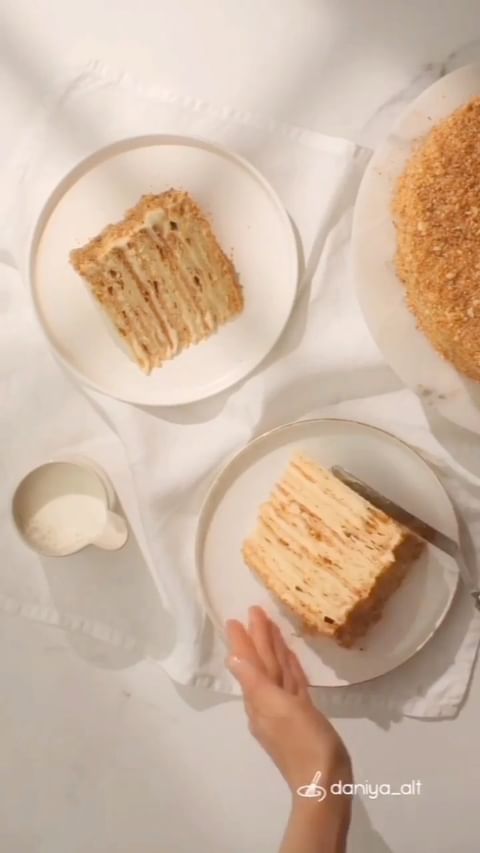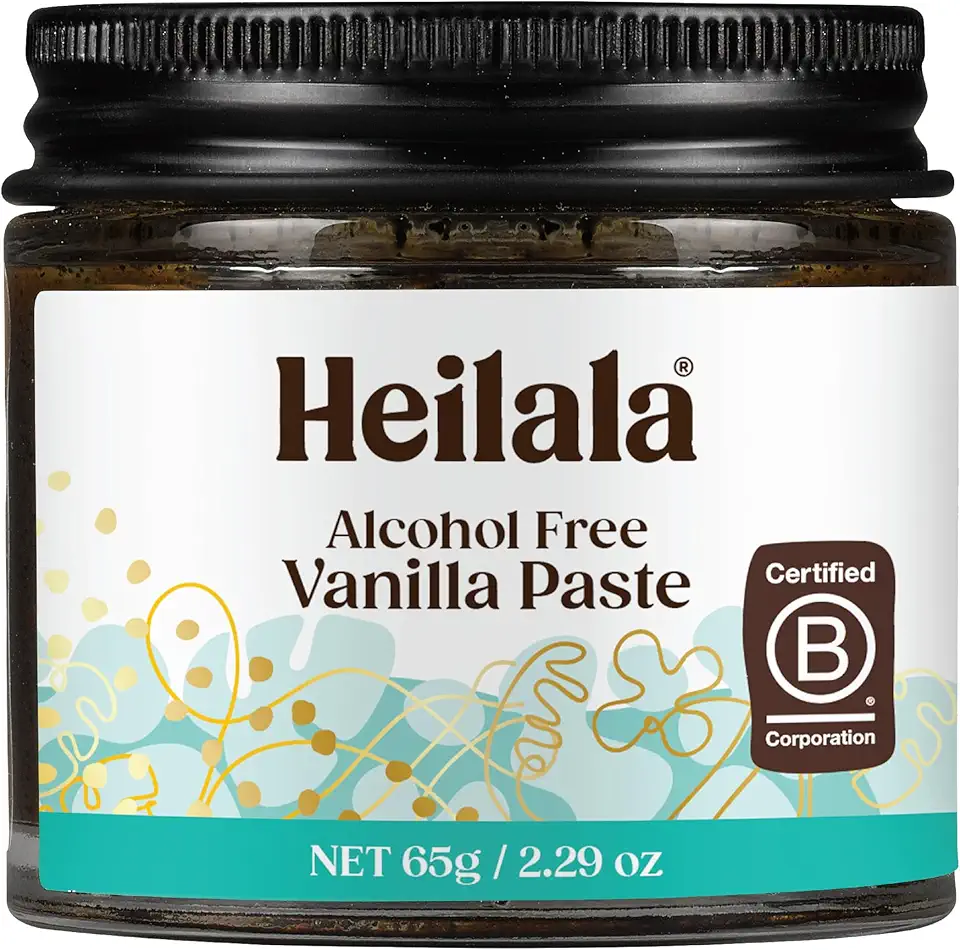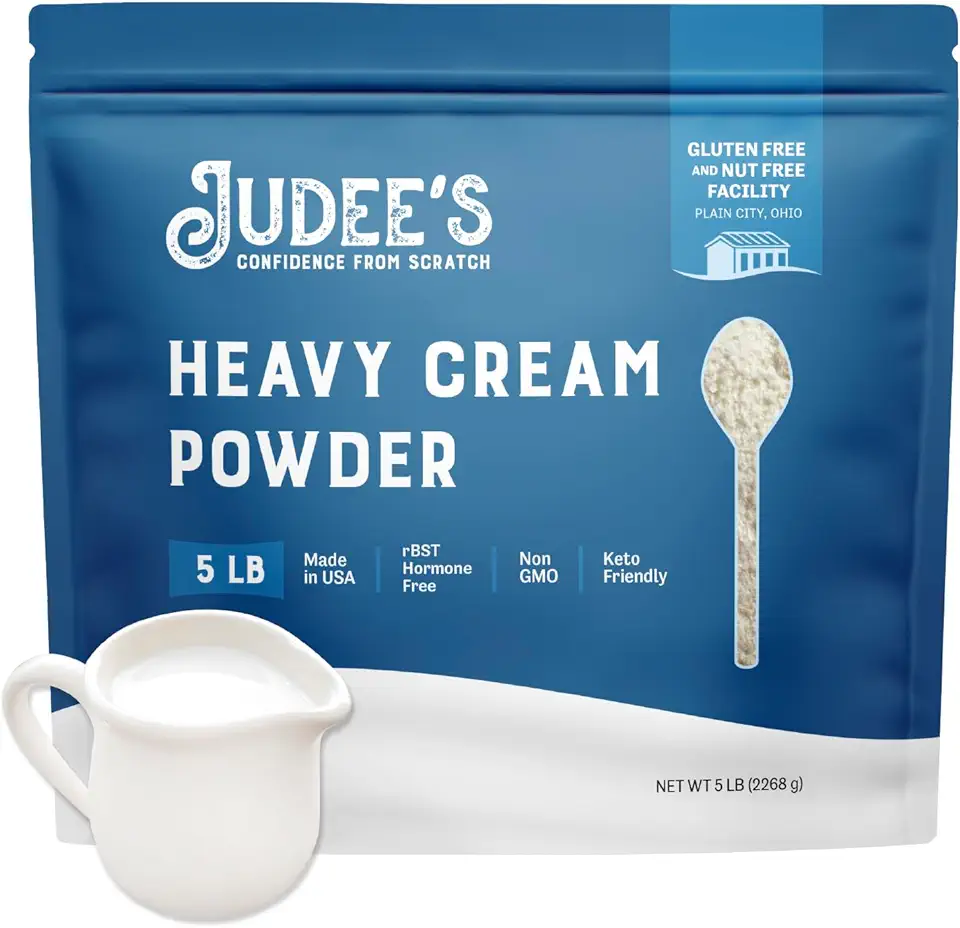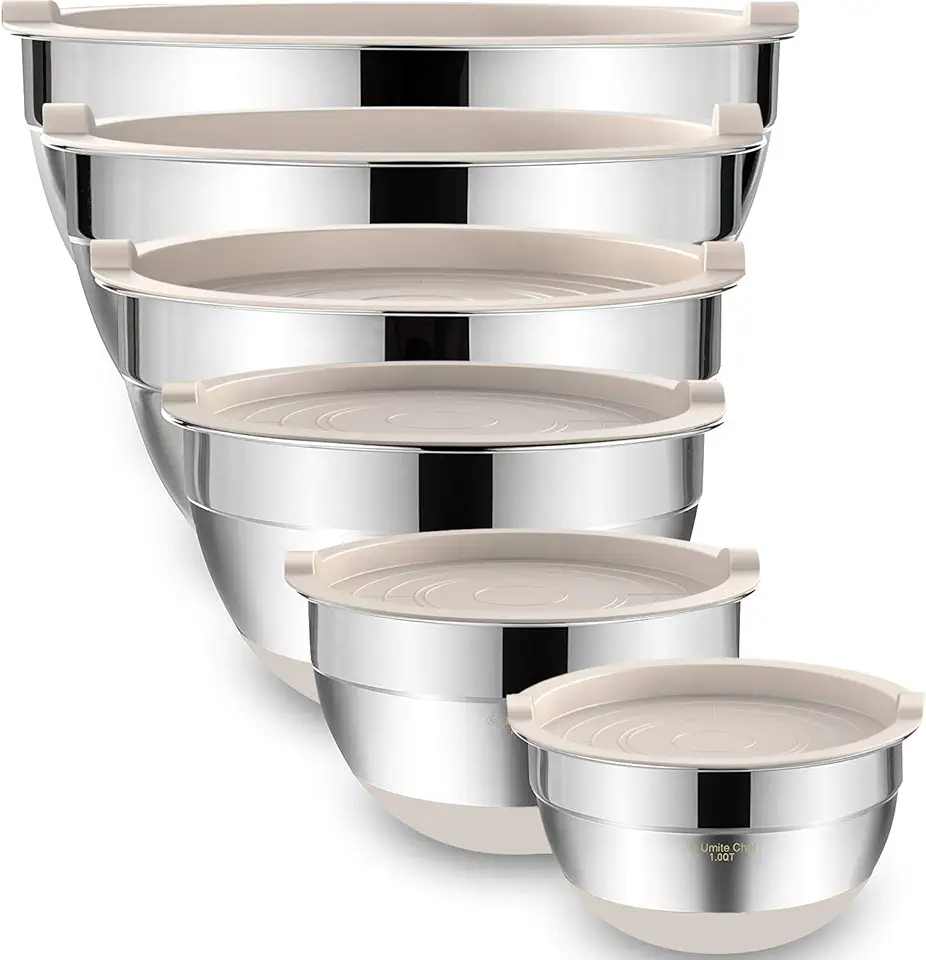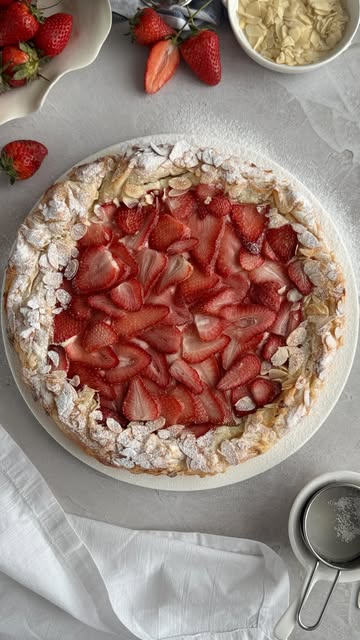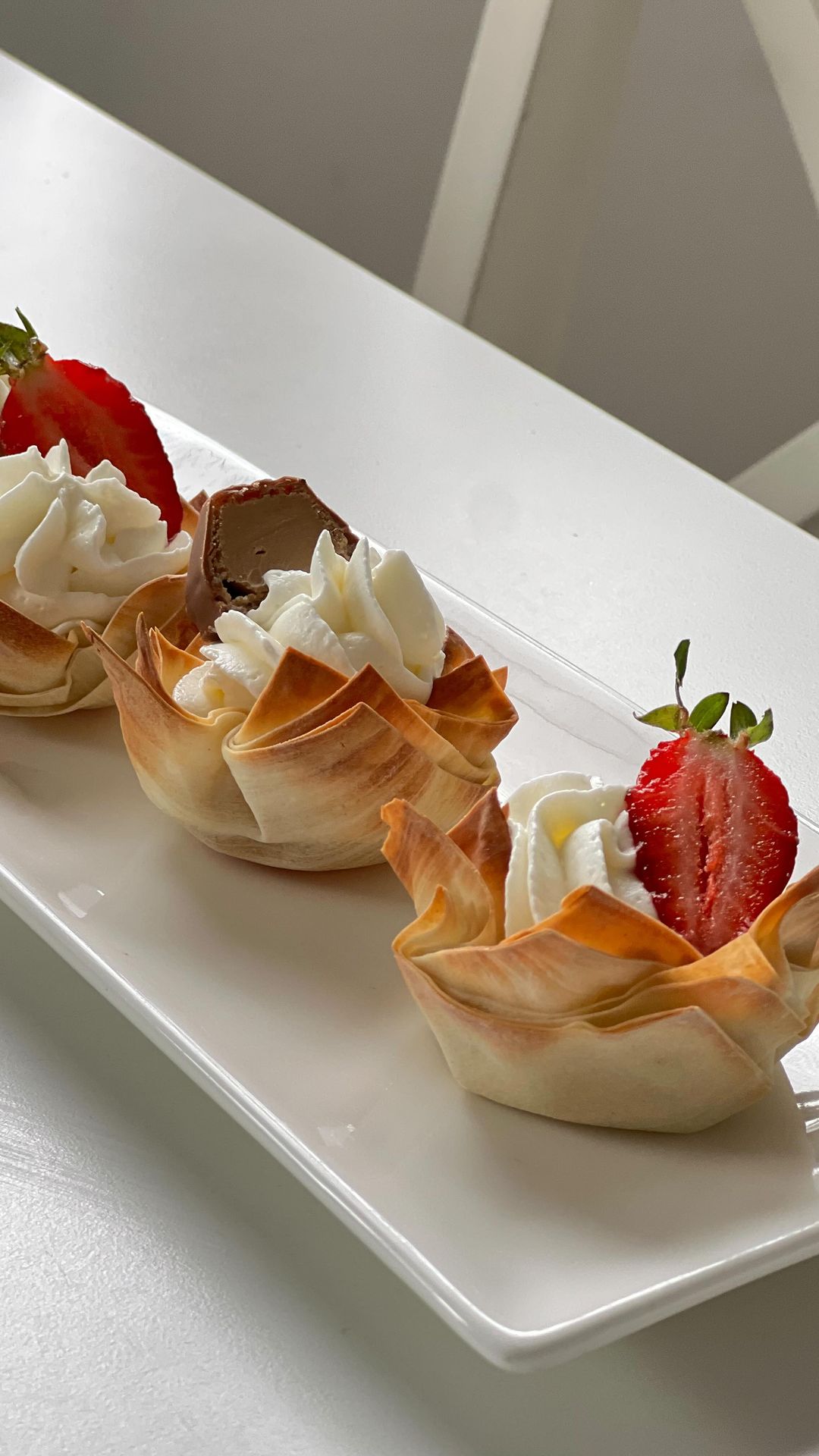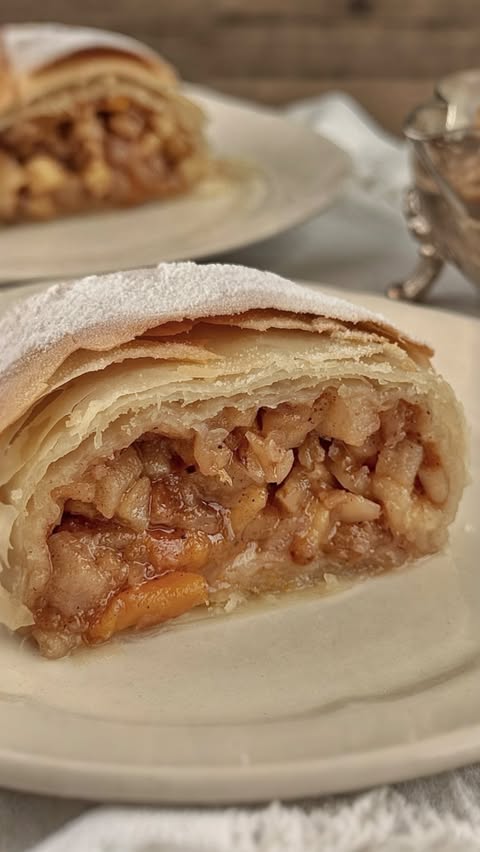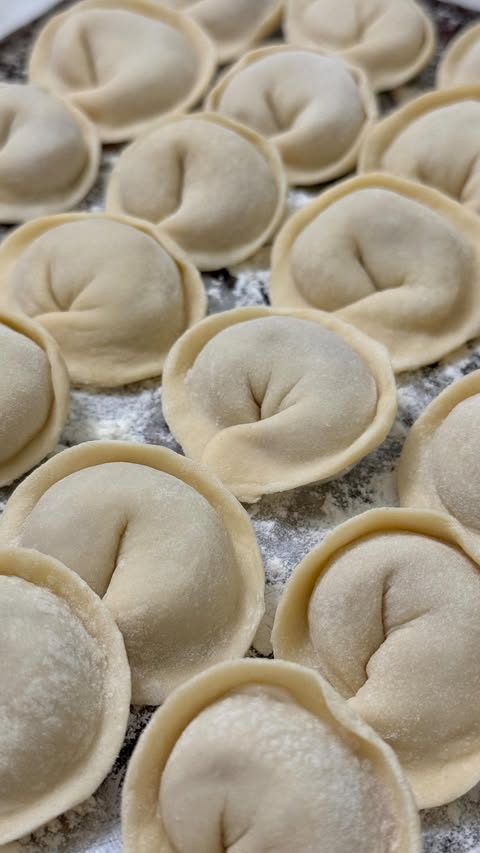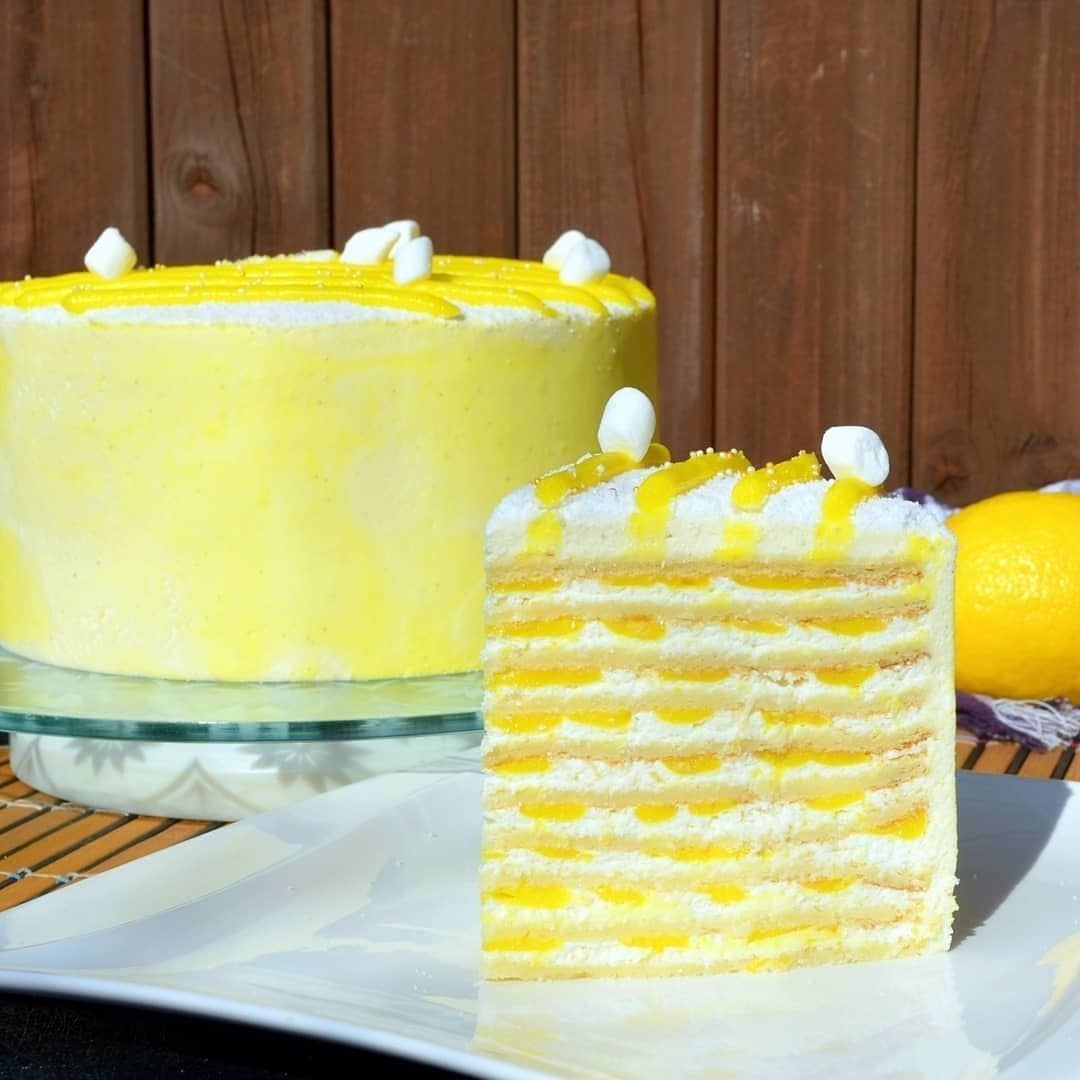Ingredients
Dough
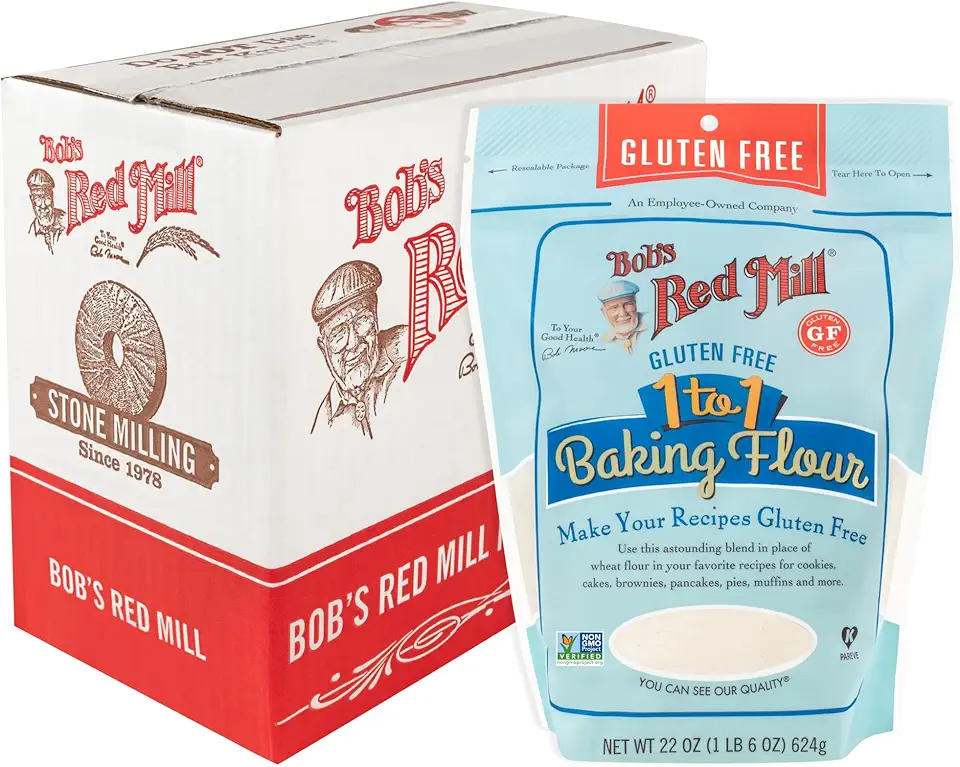 Bob's Red Mill Gluten Free 1-to-1 Baking Flour, 22 Ounce (Pack of 4)
$23.96
View details
Prime
Bob's Red Mill Gluten Free 1-to-1 Baking Flour, 22 Ounce (Pack of 4)
$23.96
View details
Prime
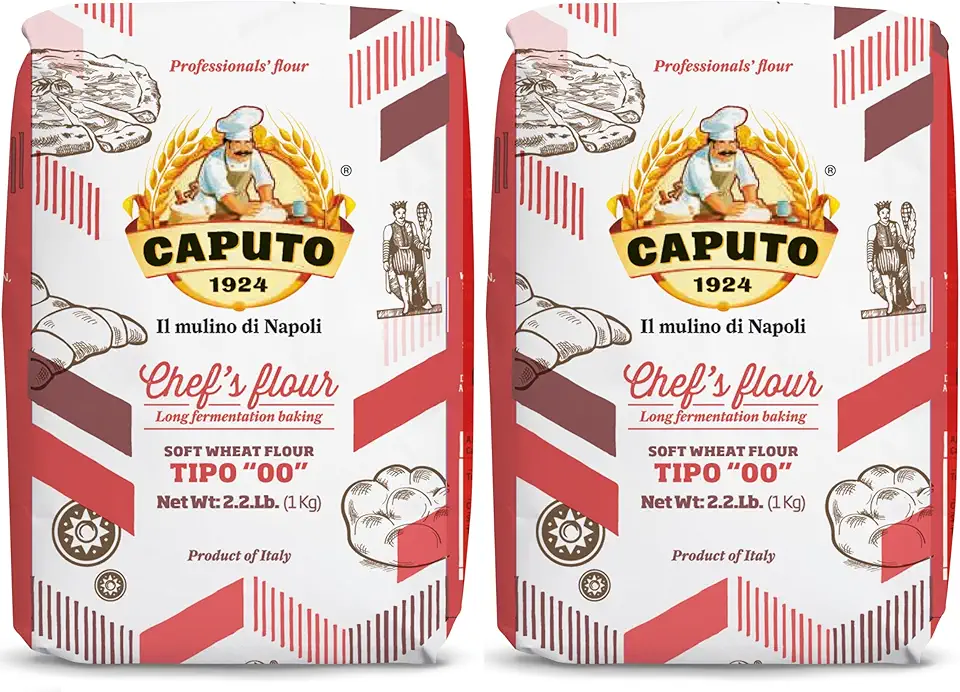 Antimo Caputo Chefs Flour - Italian Double Zero 00 - Soft Wheat for Pizza Dough, Bread, & Pasta, 2.2 Lb (Pack of 2)
$16.99
View details
Prime
best seller
Antimo Caputo Chefs Flour - Italian Double Zero 00 - Soft Wheat for Pizza Dough, Bread, & Pasta, 2.2 Lb (Pack of 2)
$16.99
View details
Prime
best seller
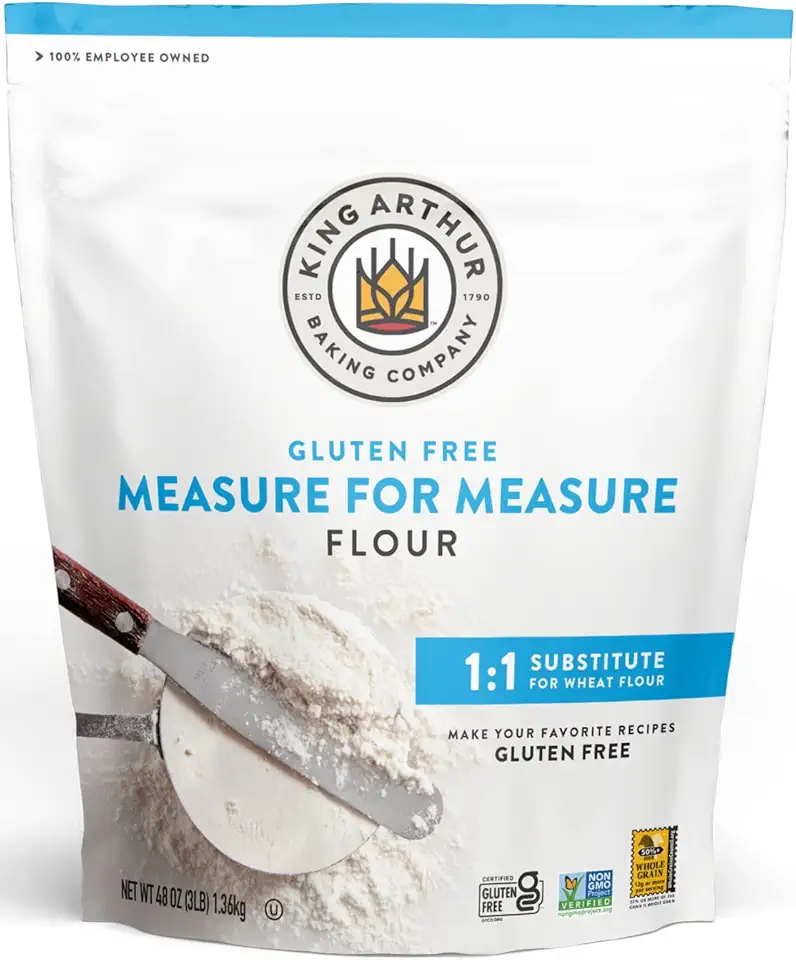 King Arthur, Measure for Measure Flour, Certified Gluten-Free, Non-GMO Project Verified, Certified Kosher, 3 Pounds, Packaging May Vary
$8.62
View details
King Arthur, Measure for Measure Flour, Certified Gluten-Free, Non-GMO Project Verified, Certified Kosher, 3 Pounds, Packaging May Vary
$8.62
View details
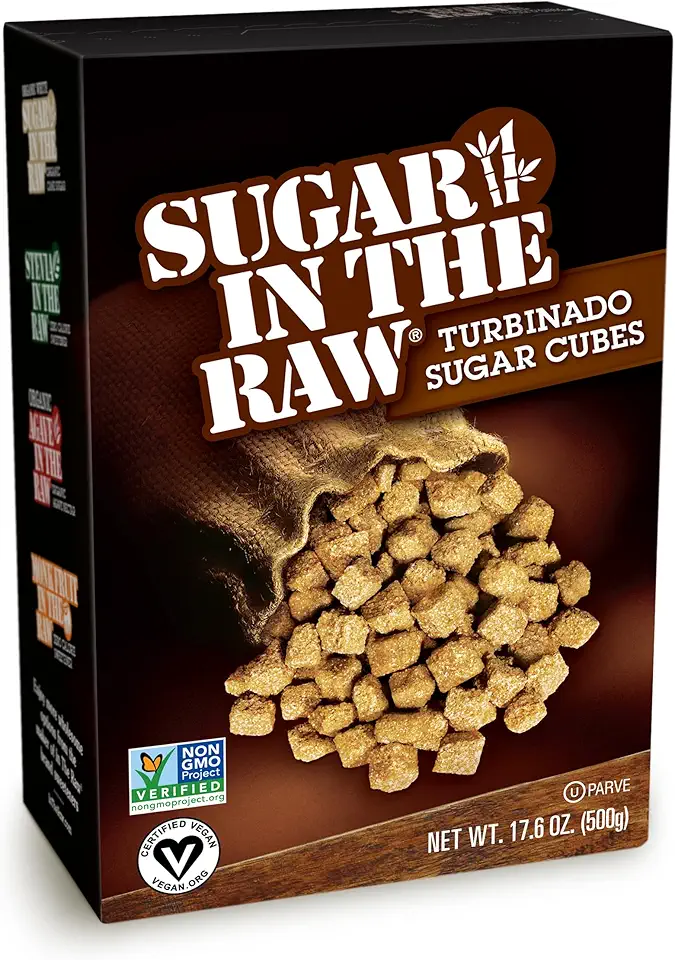 Sugar In The Raw Granulated Turbinado Cane Sugar Cubes, No Added Flavors or erythritol, Pure Natural Sweetener, Hot & Cold Drinks, Coffee, Vegan, Gluten-Free, Non-GMO,Pack of 1
$5.27
View details
Prime
Sugar In The Raw Granulated Turbinado Cane Sugar Cubes, No Added Flavors or erythritol, Pure Natural Sweetener, Hot & Cold Drinks, Coffee, Vegan, Gluten-Free, Non-GMO,Pack of 1
$5.27
View details
Prime
 Sugar In The Raw Granulated Turbinado Cane Sugar, No Added Flavors or erythritol, Pure Natural Sweetener, Hot & Cold Drinks, Coffee, Baking, Vegan, Gluten-Free, Non-GMO, Bulk Sugar, 2lb Bag (1-Pack)
$3.74
$4.14
View details
Prime
Sugar In The Raw Granulated Turbinado Cane Sugar, No Added Flavors or erythritol, Pure Natural Sweetener, Hot & Cold Drinks, Coffee, Baking, Vegan, Gluten-Free, Non-GMO, Bulk Sugar, 2lb Bag (1-Pack)
$3.74
$4.14
View details
Prime
 C&H Pure Cane Granulated White Sugar, 25-Pound Bags
$56.99
$49.98
View details
C&H Pure Cane Granulated White Sugar, 25-Pound Bags
$56.99
$49.98
View details
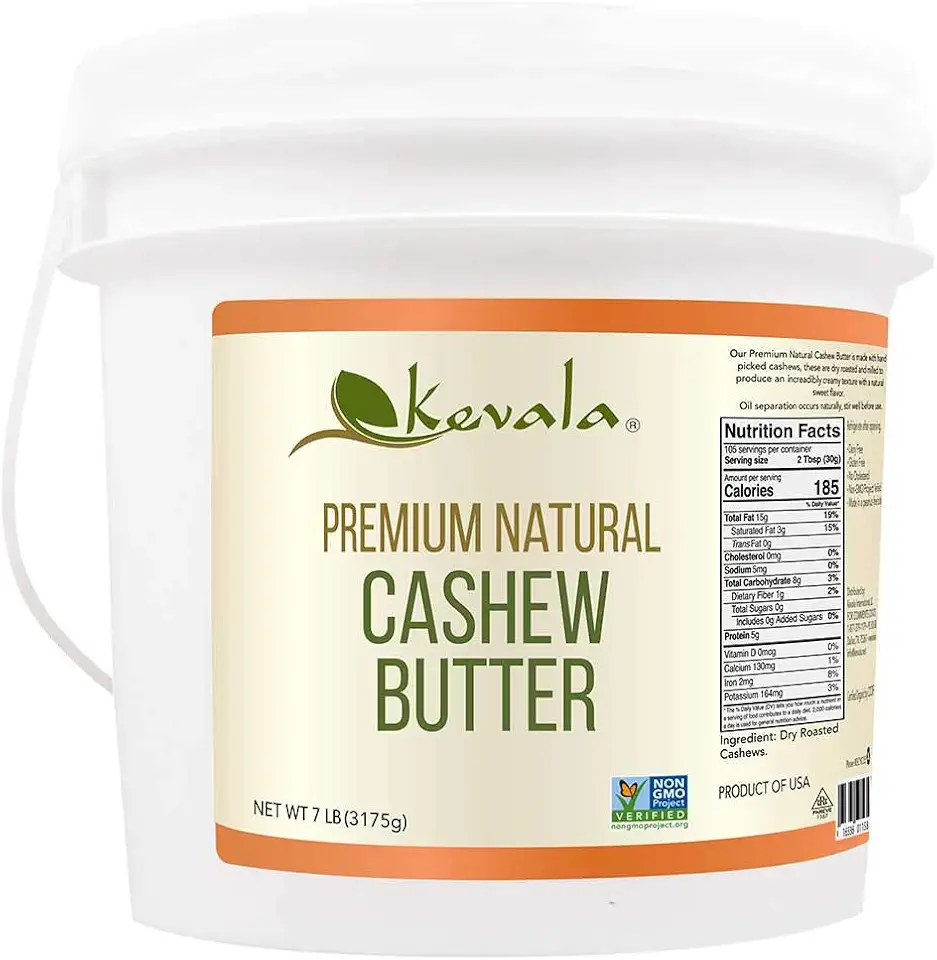 Kevala Cashew Butter 7 Lbs Pail
$83.62
View details
Prime
best seller
Kevala Cashew Butter 7 Lbs Pail
$83.62
View details
Prime
best seller
 4th & Heart Original Grass-Fed Ghee, Clarified Butter, Keto, Pasture Raised, Lactose and Casein Free, Certified Paleo (9 Ounces)
$11.49
View details
Prime
4th & Heart Original Grass-Fed Ghee, Clarified Butter, Keto, Pasture Raised, Lactose and Casein Free, Certified Paleo (9 Ounces)
$11.49
View details
Prime
 4th & Heart Himalayan Pink Salt Grass-Fed Ghee, Clarified Butter, Keto Pasture Raised, Non-GMO, Lactose and Casein Free, Certified Paleo (9 Ounces)
$9.49
View details
4th & Heart Himalayan Pink Salt Grass-Fed Ghee, Clarified Butter, Keto Pasture Raised, Non-GMO, Lactose and Casein Free, Certified Paleo (9 Ounces)
$9.49
View details
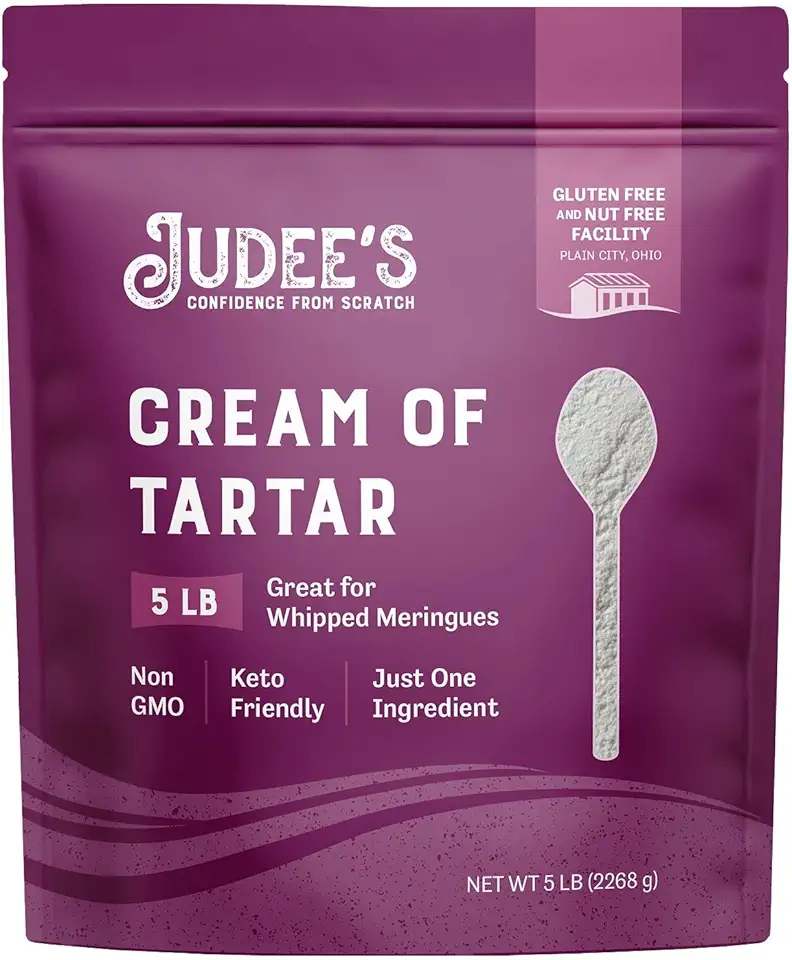 Judee’s Bulk Cream of Tartar 40 lb (5lb Pack of 8) - All Natural, Keto-Friendly, Gluten-Free & Nut-Free - Use for Baking as a Stabilizer, Cleaning and Crafting - Made in USA
$319.99
View details
Prime
Judee’s Bulk Cream of Tartar 40 lb (5lb Pack of 8) - All Natural, Keto-Friendly, Gluten-Free & Nut-Free - Use for Baking as a Stabilizer, Cleaning and Crafting - Made in USA
$319.99
View details
Prime
 Duncan Hines Whipped Cream Cheese Frosting, 14 oz
$1.92
View details
Prime
Duncan Hines Whipped Cream Cheese Frosting, 14 oz
$1.92
View details
Prime
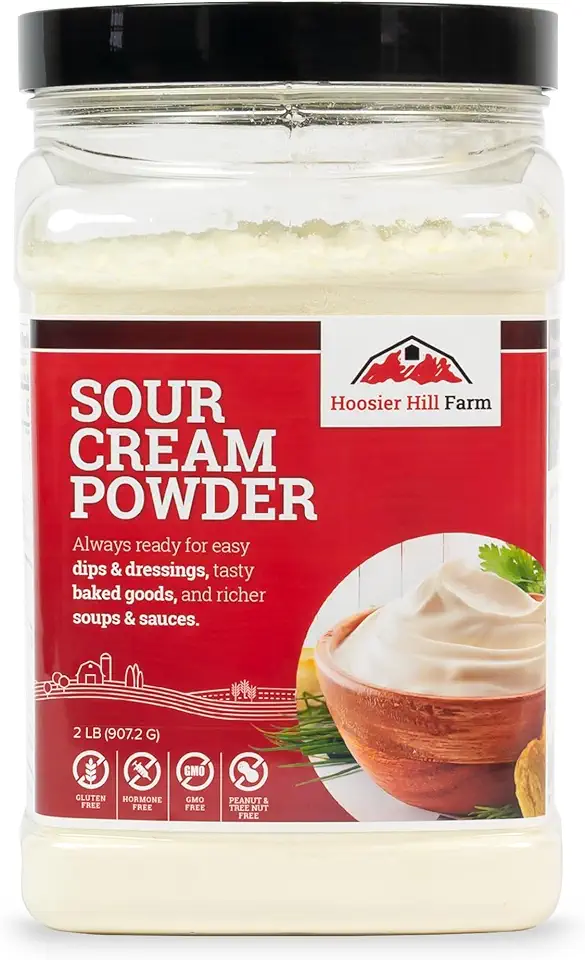 Hoosier Hill Farm Sour Cream Powder, 2LB (Pack of 1)
$29.99
View details
Hoosier Hill Farm Sour Cream Powder, 2LB (Pack of 1)
$29.99
View details
Cream
Instructions
Step 1
*Preheat* your oven to 180°C (350°F). In a large bowl, combine the flour, sugar, and salt. Add the chilled butter, cutting it into the flour mixture until it resembles coarse crumbs.
Mix in the milk, sour cream, and eggs until the dough comes together. Do not overmix to maintain a flaky texture. Divide the dough evenly into 13 portions, flatten into discs, and refrigerate for 30 minutes.
Step 2
On a floured surface, *roll out* each disc to 25 cm (10 inches) in diameter. Place each rolled dough on a baking sheet and bake for about 6-8 minutes or until golden brown.
Repeat for all discs. Let the layers cool on a wire rack before assembling the cake.
Step 3
In a saucepan, whisk together the sugar, eggs, and cornstarch. Gradually add the hot milk, continuing to whisk to prevent lumps.
Cook the mixture over medium heat until thickened. Remove from heat and stir in the butter until melted, then allow it to cool completely. Once cooled, whip the cream and fold it delicately into the mixture.
Step 4
Place one *baked layer* on a serving plate and spread a generous amount of cream over it. Repeat this process with remaining layers, ending with a layer of cream on top. Cover the sides as well.
For best results, refrigerate the cake overnight to allow the flavors to meld together. Enjoy your homemade Napoleon!
Servings
Picture a slice of Napoleon Cake served **to perfection**, paired with your favorite warm beverage.☕ Why not keep it classic with a cup of freshly brewed coffee or step it up with a velvety latte? The creamy notes of your drink will beautifully complement the rich layers of the cake.
If you're going for a touch of elegance, serve with a dollop of **whipped cream** and a sprinkle of finely crushed nuts on top.🌰 This adds a delightful contrast in texture and a nutty aroma. Perfect for impressing guests or simply treating yourself to a moment of bliss.
For a summer twist, serve with **fresh berries** or fruit compote. 🍓🍒 These bring a refreshing balance to the cake's richness, infusing each bite with a burst of fruity goodness.
Equipment
Essential for rolling out perfect pastry layers. Keep it lightly floured to prevent sticking.
 Farberware Classic Wood Rolling Pin, 17.75-Inch, Natural
$12.99
$13.99
View details
Prime
Farberware Classic Wood Rolling Pin, 17.75-Inch, Natural
$12.99
$13.99
View details
Prime
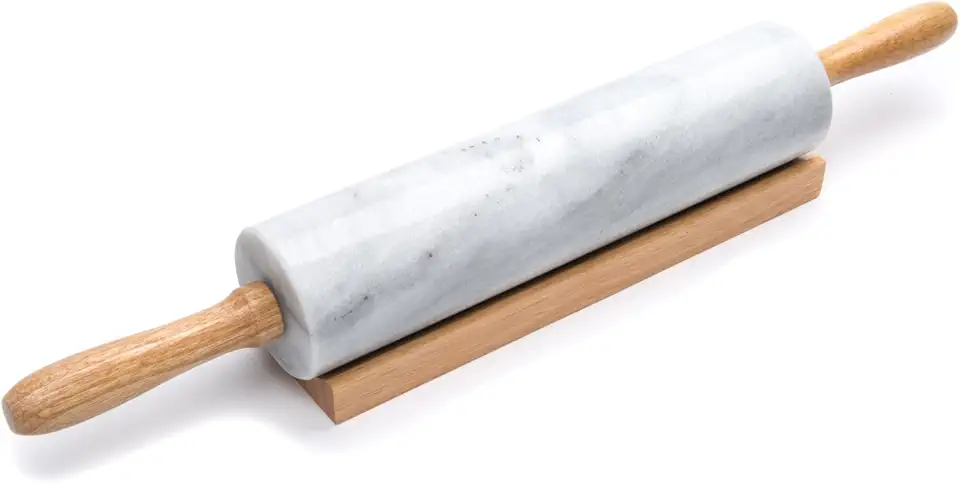 Fox Run Polished Marble Rolling Pin with Wooden Cradle, 10-Inch Barrel, White
$20.88
View details
Prime
Fox Run Polished Marble Rolling Pin with Wooden Cradle, 10-Inch Barrel, White
$20.88
View details
Prime
 French Rolling Pin (17 Inches) –WoodenRoll Pin for Fondant, Pie Crust, Cookie, Pastry, Dough –Tapered Design & Smooth Construction - Essential Kitchen Utensil
$9.99
View details
French Rolling Pin (17 Inches) –WoodenRoll Pin for Fondant, Pie Crust, Cookie, Pastry, Dough –Tapered Design & Smooth Construction - Essential Kitchen Utensil
$9.99
View details
Use separate bowls for the dough and cream to streamline preparation.
Choose a large, flat baking sheet to bake multiple layers at once for efficiency.
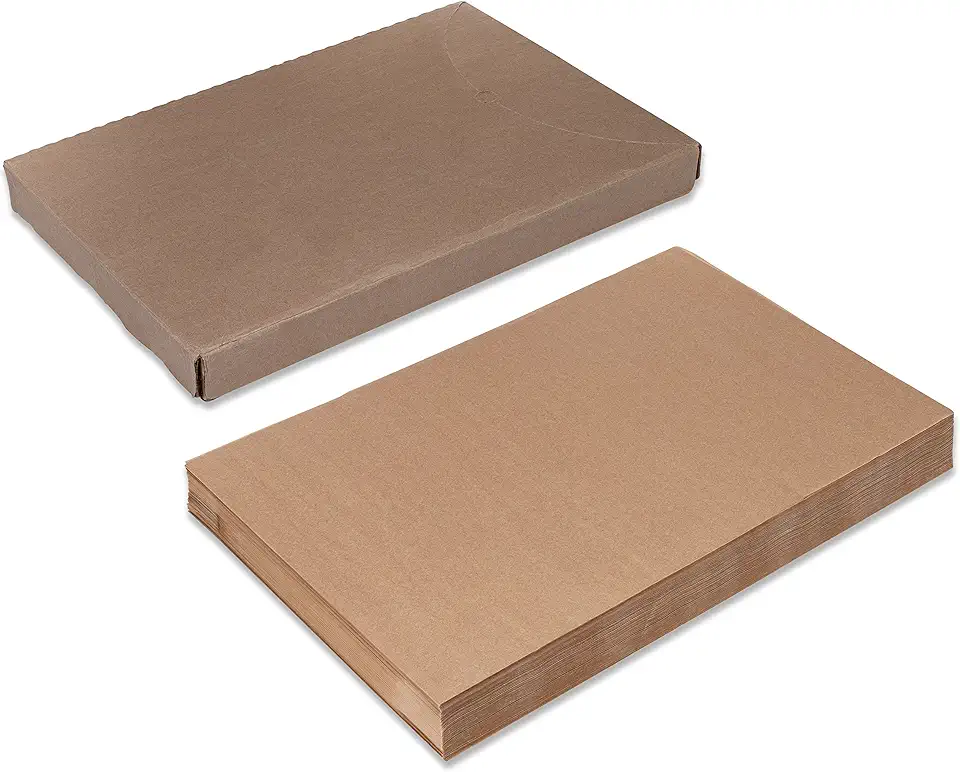 Paterson Paper 16" x 24" Full Size Unbleached Chromium-Free Reusable Baking Parchment Paper Sheets Commercial Bun/Sheet Pan Liners - 1000/Case - 425F - Non-Stick/Grease-Resistant
$169.58
View details
Prime
best seller
Paterson Paper 16" x 24" Full Size Unbleached Chromium-Free Reusable Baking Parchment Paper Sheets Commercial Bun/Sheet Pan Liners - 1000/Case - 425F - Non-Stick/Grease-Resistant
$169.58
View details
Prime
best seller
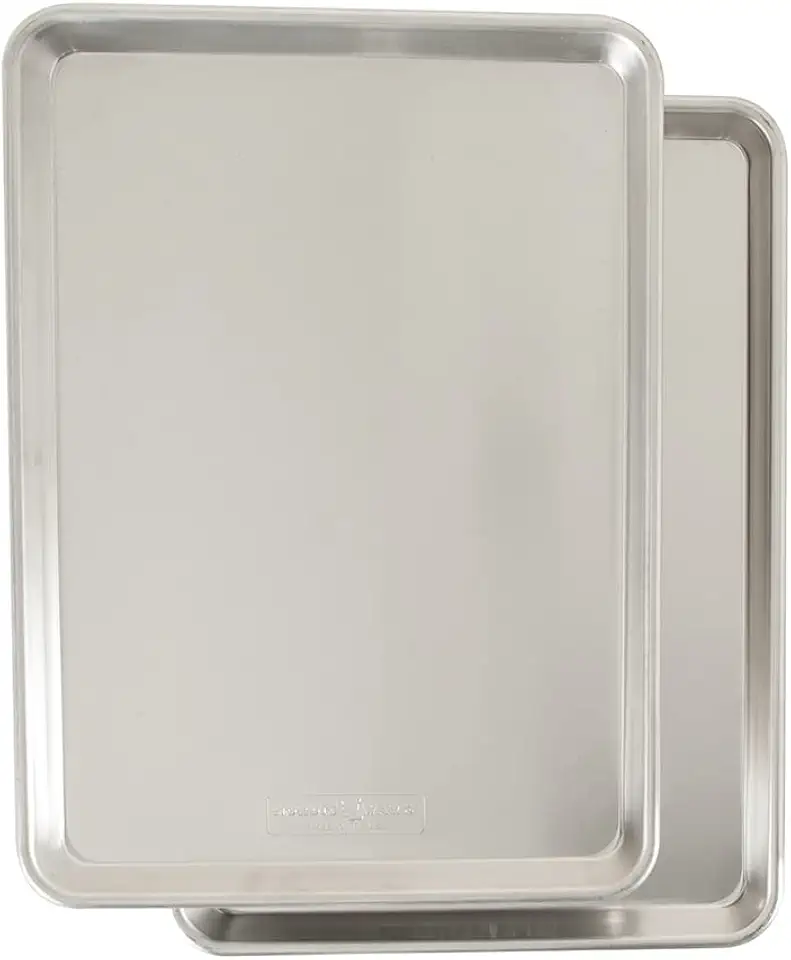 Nordic Ware Naturals Half Sheet, 2-Pack, Natural
$37.80
View details
Prime
Nordic Ware Naturals Half Sheet, 2-Pack, Natural
$37.80
View details
Prime
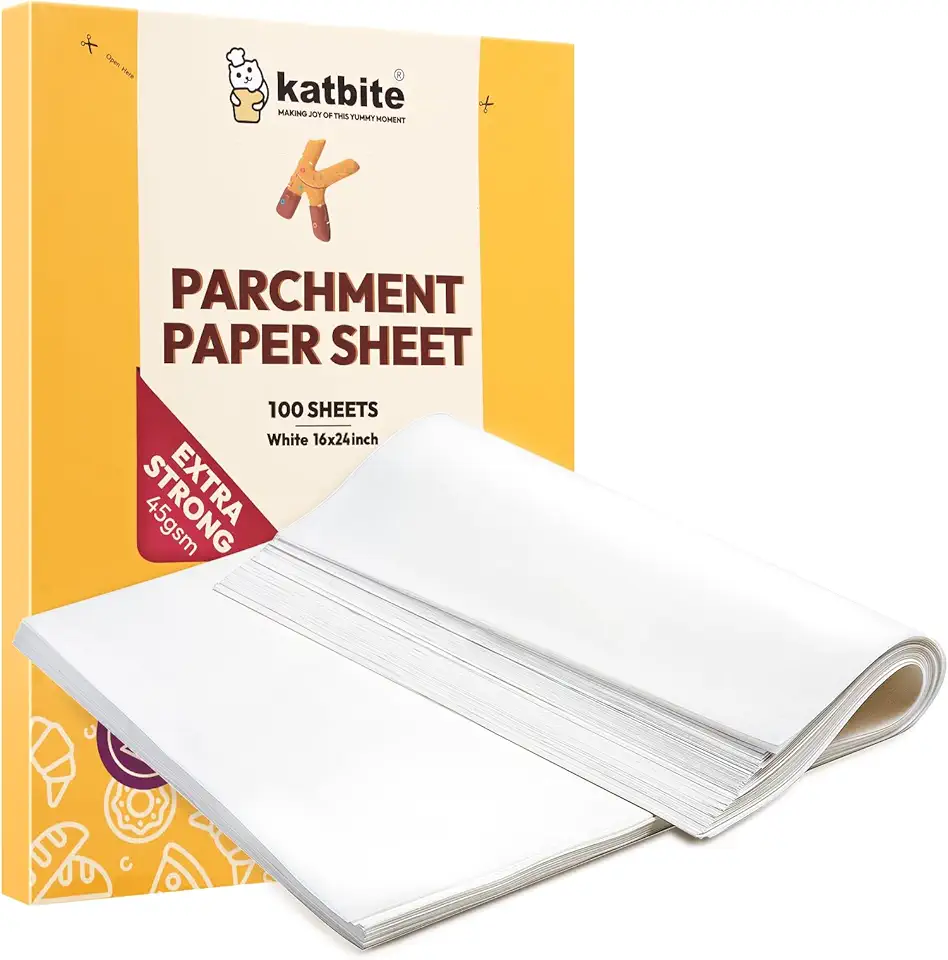 Katbite 16x24 inch Heavy Duty Parchment Paper Sheets, 100Pcs Precut Non-Stick Full Parchment Sheets for Baking, Cooking, Grilling, Frying and Steaming, Full Sheet Baking Pan Liners, Commercial Baking
$18.99
$25.99
View details
Katbite 16x24 inch Heavy Duty Parchment Paper Sheets, 100Pcs Precut Non-Stick Full Parchment Sheets for Baking, Cooking, Grilling, Frying and Steaming, Full Sheet Baking Pan Liners, Commercial Baking
$18.99
$25.99
View details
Vital for blending the cream to a smooth consistency. Invest in a sturdy whisk for best results.
 OXO Good Grips 11-Inch Balloon Whisk
$10.93
$11.95
View details
Prime
best seller
OXO Good Grips 11-Inch Balloon Whisk
$10.93
$11.95
View details
Prime
best seller
 Walfos Silicone Whisk,Stainless Steel Wire Whisk Set of 3 -Heat Resistant 480°F Kitchen Whisks for Non-stick Cookware,Balloon Egg Beater Perfect for Blending,Whisking,Beating,Frothing & Stirring,Black
$11.89
$14.99
View details
Prime
Walfos Silicone Whisk,Stainless Steel Wire Whisk Set of 3 -Heat Resistant 480°F Kitchen Whisks for Non-stick Cookware,Balloon Egg Beater Perfect for Blending,Whisking,Beating,Frothing & Stirring,Black
$11.89
$14.99
View details
Prime
 Pack of 2 Danish Dough Whisk Blender Dutch Bread Whisk Hook Wooden Hand Mixer Sourdough Baking Tools for Cake Bread Pizza Pastry Biscuits Tool Stainless Steel Ring 13.5 inches 0.22 lb/pcs…
$9.80
$14.99
View details
Pack of 2 Danish Dough Whisk Blender Dutch Bread Whisk Hook Wooden Hand Mixer Sourdough Baking Tools for Cake Bread Pizza Pastry Biscuits Tool Stainless Steel Ring 13.5 inches 0.22 lb/pcs…
$9.80
$14.99
View details
Makes layering the cream between pastry sheets a breeze.
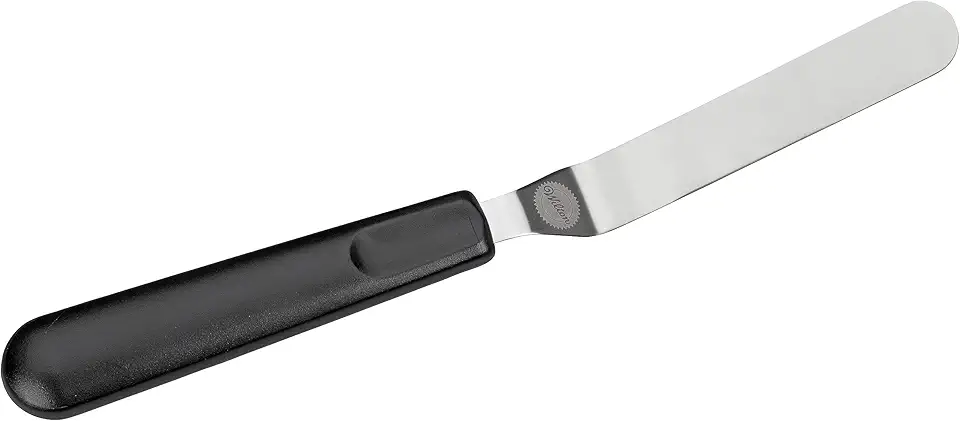 Wilton 409-7712 Angled Spatula, 9", 9 inch, Black
$5.96
$8.99
View details
Prime
Wilton 409-7712 Angled Spatula, 9", 9 inch, Black
$5.96
$8.99
View details
Prime
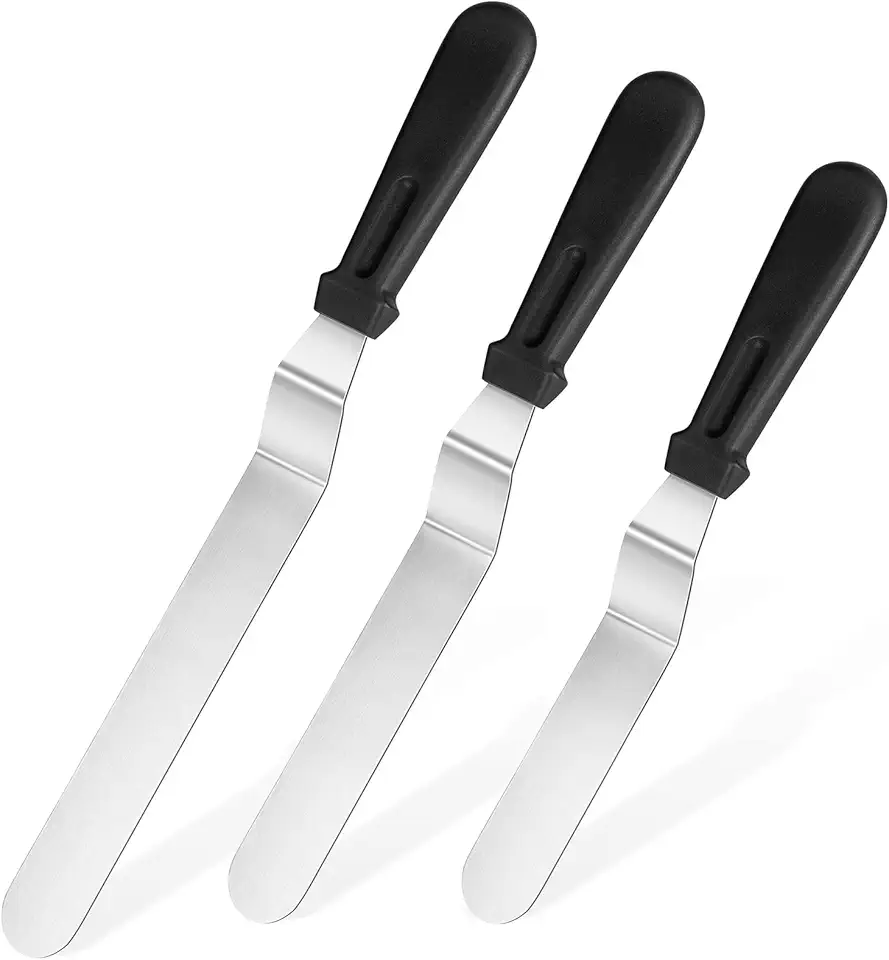 Icing Spatula, U-Taste Offset Spatula Set with 6", 8", 10" Blade,Stainless Steel Angled Cake Decorating Frosting Spatula Set of 3 (Black)
$15.99
View details
Prime
Icing Spatula, U-Taste Offset Spatula Set with 6", 8", 10" Blade,Stainless Steel Angled Cake Decorating Frosting Spatula Set of 3 (Black)
$15.99
View details
Prime
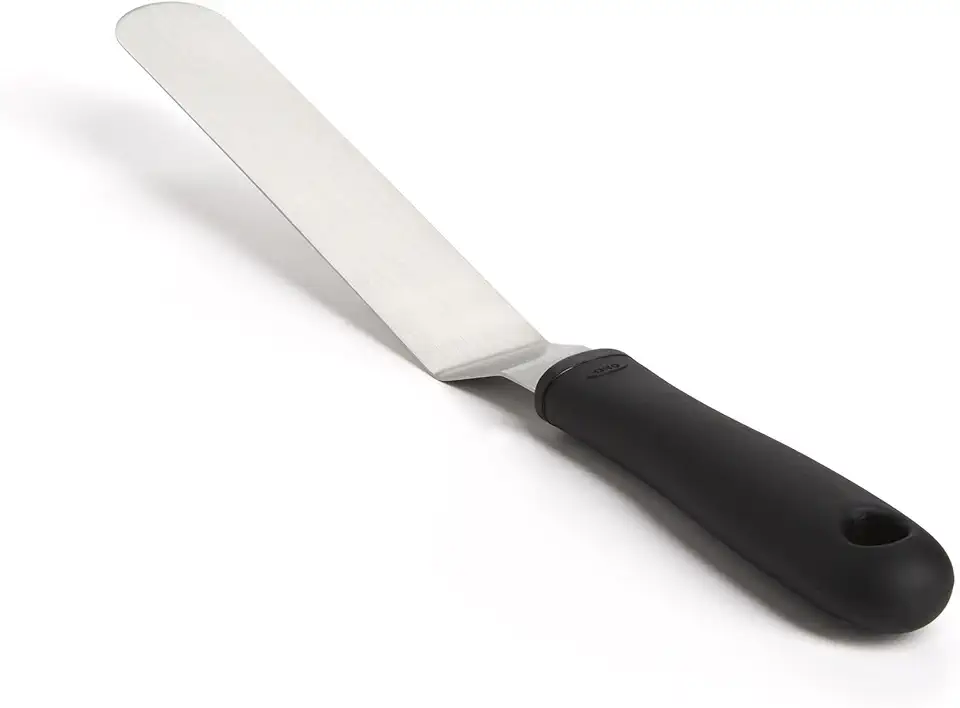 OXO Good Grips Bent Icing Spatula, Black/Silver
$11.99
View details
OXO Good Grips Bent Icing Spatula, Black/Silver
$11.99
View details
Variations
Making it gluten-free is a piece of cake! 🎂 Simply swap out the regular flour with a gluten-free all-purpose flour blend. Just be sure to check the absorption properties, as gluten-free flours can vary.
For a vegan-friendly version, replace the butter with **vegan butter**, and the eggs with a combination of flaxseed and water (1 tablespoon flaxseed mixed with 3 tablespoons water per egg). Swap the milk and cream with almond milk and coconut cream for a creamy, plant-based delight.🥥🌱
Faq
- What tips can ensure flaky layers?
Make sure not to overmix the dough. Keeping the butter as cold as possible helps too!
- How do I store leftover Napoleon Cake?
Store it in the fridge, covered with a cake dome or plastic wrap to prevent it from drying out.
- Is there a way to speed up the pastry preparation?
You could try using a food processor to combine the dough ingredients quickly.
- What consistency should the cream have?
The cream should be thick but spreadable, like a pudding. If too thick, whisk in some extra milk.
- Can I make the pastry ahead of time?
Absolutely! You can prepare the pastry dough and freeze it for up to a month. Thaw in the fridge overnight before use.
- How do I know when my pastry is baked perfectly?
The layers should be golden brown with a crispy edge, not doughy or undercooked.

